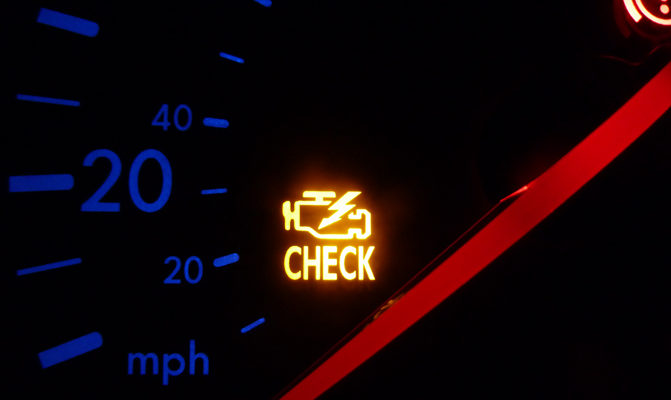There comes a point in every car’s life when that little yellow engine shaped light will illuminate bringing with it a bad feeling in the pit of your stomach. But here are some facts about check engine lights that will give a little more clarity so that if and when it happens to you, you’ll be able to handle the situation correctly.
First and foremost, is there some sort of drive ability issue? For example, if the malfunction indicator lamp (AKA check engine light or MIL for short) comes on and flashes the car is trying to tell you you should pull over whenever it is safe and stop driving the vehicle. Some vehicles may even limit the speed of the vehicle so you can’t drive over a certain speed ( Most of the time around 40MPH). A flashing MIL means the vehicle’s engine is misfiring in one or more of it’s cylinders. We will go over the potential causes of a misfire in another blog installment. Basically a misfire means there is no power being produced in one or more cylinders therefore the engine is not running correctly. It also means that there is air going into the exhaust from the cylinder(s) that are not firing. This air will cause the catalytic converter to run extremely hot, to the point that the precious metal core will melt, costing you even more money if you keep driving that way. So when your vehicle’s check engine light is flashing pull over whenever it is safe and have your car towed to the nearest repair facility.
Now just because the MIL isn’t blinking, doesn’t mean you shouldn’t have it checked out. A scan of the engine’s computer will retrieve the diagnostic trouble code or DTC, but it will not tell you the reason why the light turned on in the first place. Most places charge for a diagnostic, but many will credit this toward the actual repair. The reason why the MIL comes on is because the computer detects that there was a failure in some within one of the given systems it is tasked with monitoring. And although a computer can retrieve the code, it will be up to an experienced technician to figure out why and how to fix it. Depending on which system fails it can affect many different things. Most likely your car is polluting more, gas mileage will likely go down and in the worst case it may be damaging the engine/transmission or catalytic converter.
So why not just disconnect the battery? It’s true disconnecting the battery may turn the light off, but it will not fix the problem and the light will end up coming back on. This also may seem like a smart way to cheat your state’s emissions test. But keep in mind that after the light turned off, each system must run their monitors to make sure everything is working properly. This may take several miles of driving and if the monitors don’t set, or the light comes back on it will be an automatic fail.
That’s why it’s always a good idea to at least have the vehicle checked out if the MIL comes on even if you don’t get it repaired. At least you know what is wrong and you can either stop driving the car if it is damaging or save money for the repair. As always if you need help with your check engine light woes, feel free to call or stop by MR Auto SD. See you next time!
